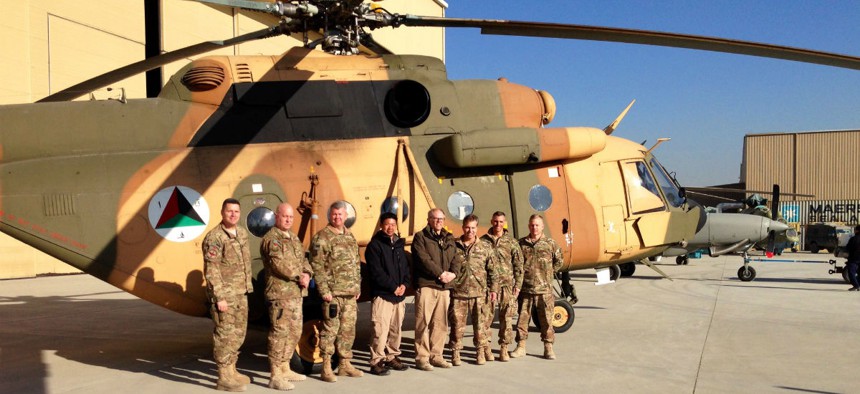
SIGAR staff at the Kabul Airport in Afghanistan in January 2014. Flickr user Special IG for Afghanistan Reconstruction
U.S. Bid to Stand Up Afghan Aviation Capabilities Falters
SIGAR warns $562 million effort may require a new training contract.
The Pentagon, State Department and Federal Aviation Administration have spent $562 million over 12 years to bolster a crumbling civil aviation system in war-torn Afghanistan.
Despite some progress toward independence, says a watchdog audit released Friday, the inability to train sufficient Afghan personnel by the end of 2014 might require funding an additional contract.
Though much of the aid had a military focus, it benefited the civilian authority by supplying communication, navigation, and surveillance equipment while rebuilding infrastructure at four international airports, the report from the Special Inspector General for Afghanistan Reconstruction noted.
But the shortage of trained air traffic controllers and related employees meant the U.S. missed its December goal for transferring airport management to the Afghans. FAA encountered a number of problems in its efforts to train Afghans. Security concerns prevented students from accessing some facilities for on-the-job training, and plans to train Afghans abroad were thwarted when some students defected and FAA was unable to obtain visas and passports for others. In addition, the Afghan government failed to devote the entirety of its revenue from collecting over-flight fees to aviation improvements.
“The Afghan government's failure to award an airspace management contract resulted in the U.S. paying $29.5 million for an interim contract to continue those services,” a SIGAR release said. “The Afghan government did not award a contract, citing what it believed to be excessive costs. Unless the Afghan government awards a follow-on contract before the interim contract expires, the U.S. government could be called upon to fund another interim contract” after September 2015.
The State Department generally accepted the report’s findings.







